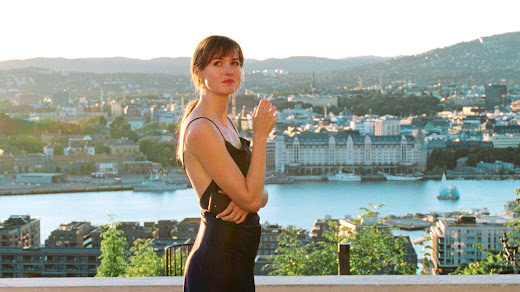 |
| Renate Reinsve |
The film's romantic triangle remains balanced throughout. Each of the three has their virtues, faults and reasons. As Sheila O'Malley has noted, "Trier resists stark binaries." The film has no heroine or villain, no best or worst person. All three main leads are three dimensional and sympathetic in a film graced by superb performances. Only the supporting roles on the periphery of the film have hints of caricature, especially Julie's father and Elvind's environmentalist girlfriend.
One clue to Trier's intent is the drunken defense of Freud offered by Aksel. Seemingly a red herring, this gratuitous reference actually points to a number of Freudian concepts embedded in the film, most particularly ambivalence. The film's characters' interactions display that each relationship, no matter how loving on the surface, contain currents of both adoration and antipathy. Julie has trouble settling because she is in touch with how unsettled she is inside. It is significant that the most romantic moment in the film occurs when Julie literally puts her life with Aksel on pause to race across town and embrace Elvind. It is a day dream, a fantasy within Julie's mind. Romance is the stuff of dreams, but love and family are hard work; and who wants to work all one's life.
The film is less successful illustrating another Freudian concept, wish fulfillment. I am not going to spill all the spoilers (and the Freudian concepts of this film are a book topic not an essay topic), but I will say that I felt Julie's dream sequence was too literal. However, I should note I am married to a shrink and feel that even the dream sequences in Wild Strawberries are too literal, so take this with a grain of salt. Whatever petty gripes I have, The Worst Person in the World is a must see.





No comments:
Post a Comment